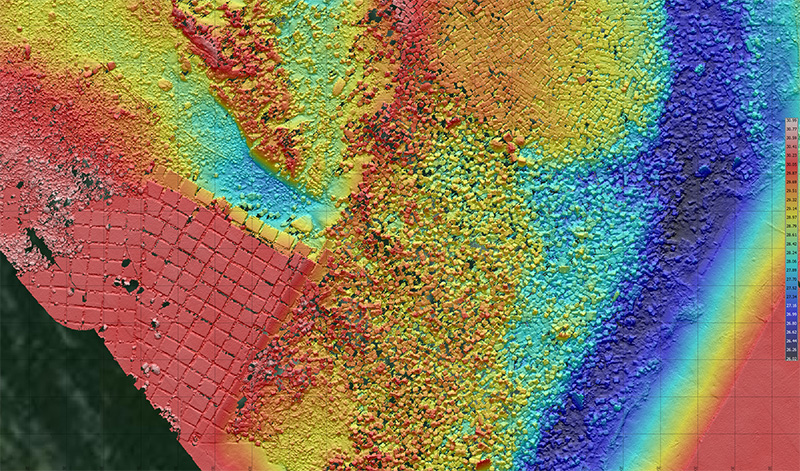
This past year, a hydrographic survey team, LVR Flote, was tasked with providing high-resolution underwater measurement services in Salacgrīva as part of the EU Military Mobility project, which was rebuilding the Salaca River Bridge, an important State Main Road critical infrastructure project.
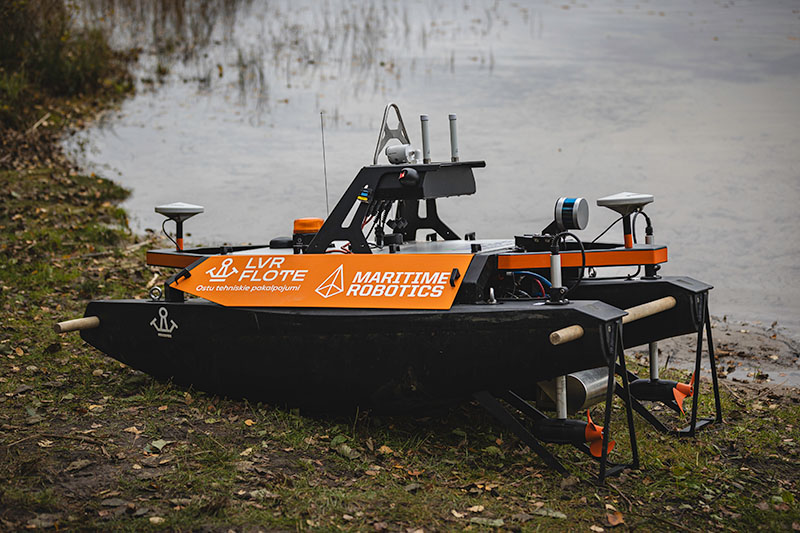 This crucial infrastructure project required a high level of accuracy and efficiency, which was achieved by the cooperation and complementary expertise of LVR Flote, using
Teledyne Marine's SeaBat T20 multibeam, which was fitted on an Uncrewed Surface Vessel (USV).
This crucial infrastructure project required a high level of accuracy and efficiency, which was achieved by the cooperation and complementary expertise of LVR Flote, using
Teledyne Marine's SeaBat T20 multibeam, which was fitted on an Uncrewed Surface Vessel (USV).
Inaccessible areas challenge hydrographic surveying
Restoring the bridge over the waterway of the Salaca River involved a series of challenges in hydrographic surveying when collecting information about the intricate underwater environment.
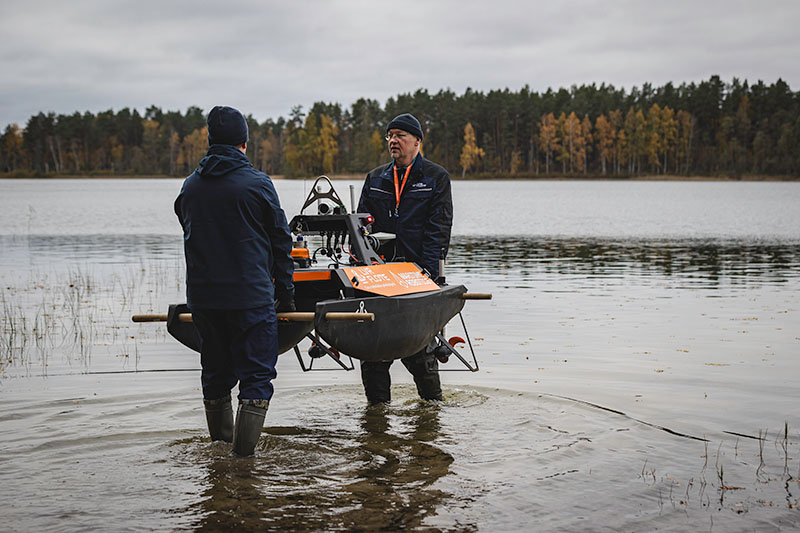
Since some areas were inaccessible with traditional hydrographic vessels specialist transducers were necessarily situated in a confined zone of work close to structures such as bridges where conductivity, turbidity, or sediments could influence the measurements.
Collecting accurate and up-to-date bathymetry data was essential to avoid damaging the surrounding environment and avoiding potential hazards linked to the construction processes, as divers were present in several critical parts, and the passage of heavy equipment.
USV with SeaBat T20-ASV to do the job
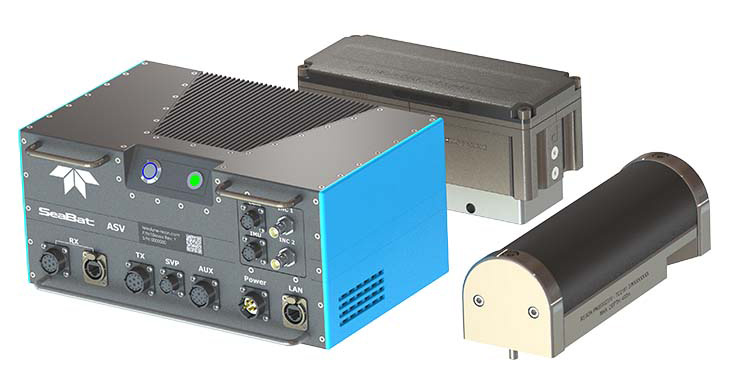 To overcome these challenges, they sent out LVR Flote's USV, with the
Teledyne Marine's SeaBat T20-ASV multibeam sonar. The SeaBat T20-ASV is a compact high resolution multibeam echo sounder tailored towards uncrewed or autonomous operations. It is the perfect match for the challenging and restrictive situations found at infrastructure projects, such as the reconstruction of a bridge.
To overcome these challenges, they sent out LVR Flote's USV, with the
Teledyne Marine's SeaBat T20-ASV multibeam sonar. The SeaBat T20-ASV is a compact high resolution multibeam echo sounder tailored towards uncrewed or autonomous operations. It is the perfect match for the challenging and restrictive situations found at infrastructure projects, such as the reconstruction of a bridge.
For instance, SeaBat's automated controls known as “Tracker" simplifies the user's workflow. It functions as an autopilot for sonar settings, which is especially useful for uncrewed operations. With Tracker, LVR Flote can be confident that the best sonar settings are being used, ensuring the highest quality data.
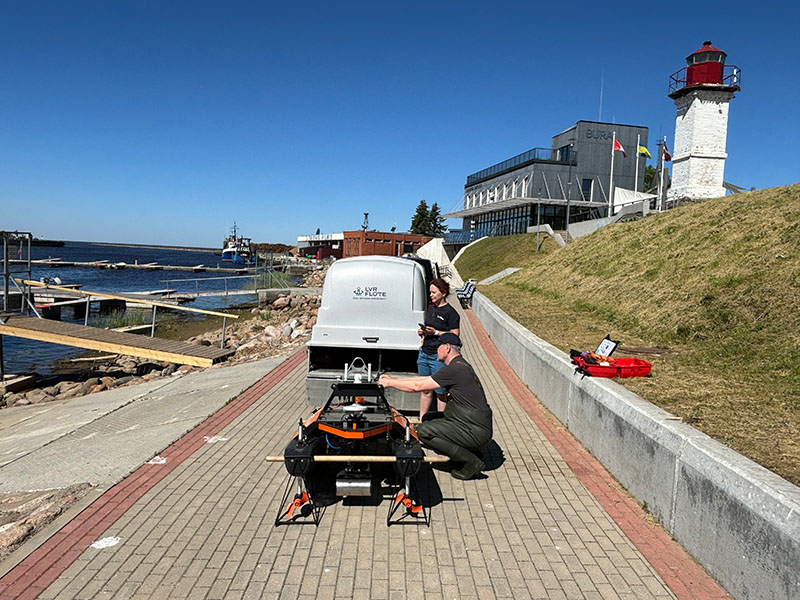 Another feature invaluable in a job like this is
Vertical Detection Mode: This mode enables the
SeaBat T20 to survey effectively beneath vertical infrastructure such as bridge foundations and seawalls. Vertical structures can obscure or distort data gathered with conventional sonars, but the SeaBat T20 clearly and reliably measured this area identified under the bridge.
Another feature invaluable in a job like this is
Vertical Detection Mode: This mode enables the
SeaBat T20 to survey effectively beneath vertical infrastructure such as bridge foundations and seawalls. Vertical structures can obscure or distort data gathered with conventional sonars, but the SeaBat T20 clearly and reliably measured this area identified under the bridge.
And the result?
Being able to produce high resolution images of subsea reduces the reliance on diving activity and therefore health and safety risks and improved efficiency.
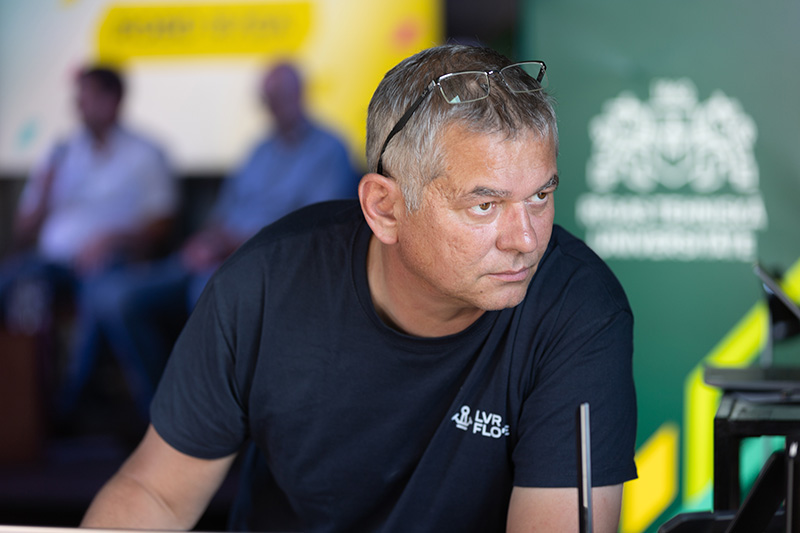 “Before we had the SeaBat T20, we used divers more indiscriminately. We had to send them in without the data to tell them where those areas of concern were. Now, when we discover there is a problem, we can zoom in on it and tell our divers where it is. Their time in the water feels more useful and focused, which has saved lots of money and means our divers are safer." Says Gatis Ceruss, LVR Flote Hydrographer.
“Before we had the SeaBat T20, we used divers more indiscriminately. We had to send them in without the data to tell them where those areas of concern were. Now, when we discover there is a problem, we can zoom in on it and tell our divers where it is. Their time in the water feels more useful and focused, which has saved lots of money and means our divers are safer." Says Gatis Ceruss, LVR Flote Hydrographer.
The successful implementation of the project opened up new opportunities for LVR Flote. Due to the capability of the remote systems equipped with the SeaBat T20, LVR Flote can now offer clients working in various sectors (Latvian ports, municipalities, and construction companies working with water infrastructure and maintenance). They could now undertake hydrographic services in areas otherwise physically restricted or inaccessible.
“Having an USV with its autonomous capabilities and added sensor payload like the SeaBat T20, is extending our mobility and operational range, a benefit which we will utilize, as we now can access infrastructure-related sites with an improved level of data for our customers.' — Gatis Ceruss, LVR Flote Hydrographer.
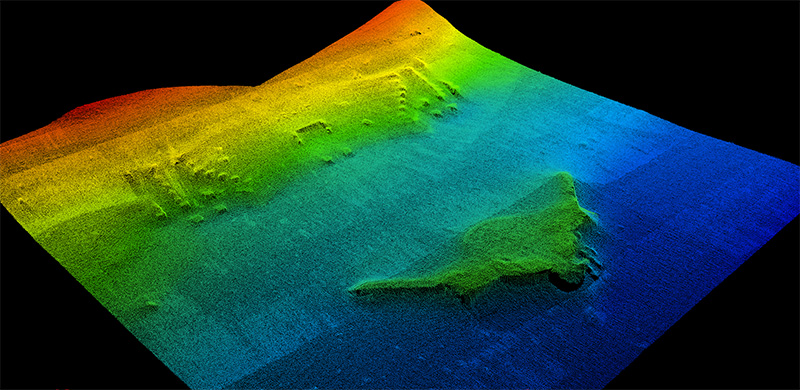
Sunken Vigante Amphitheater - project for
Latvian Television
